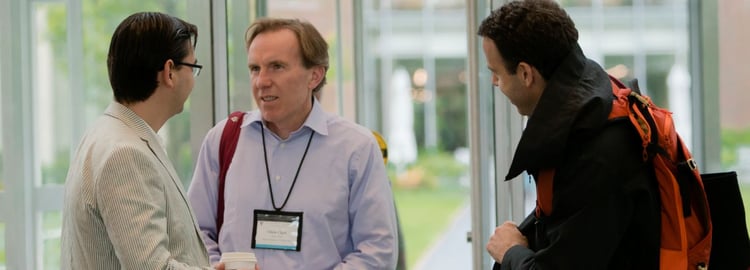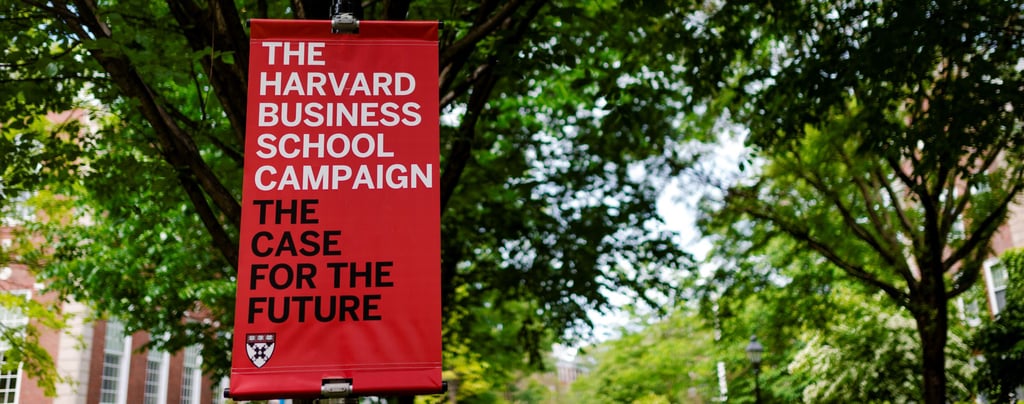The question was simple: In 2017, can anyone from any background who works hard, even strenuously, achieve a life of wealth, success and happiness in the United States?
And you thought trying to figure out the answer to product-market fit was complicated!
Rawi Abdelal, the Herbert F. Johnson Professor of International Management at Harvard Business School, assigned us this question during the Edison Partners CEO Summit at HBS earlier this month. Professor Abdelal provided economic data, trend lines of demographics, comparisons of math and science acumen across global youth, and a US-based income distribution time series during this whirlwind tour regarding the sustainability of the American Dream. These empirical facts (no fake news here), coupled with frameworks and tenets of finance, economic and entrepreneurial case studies, were done with deft diligence to keep our boisterous group interacting and behaved at the same time.
Assessing The American Dream
Predictably, our group asserted a wide variety of perspectives about whether the American Dream remains beyond the clutch of most Americans. We offered clinical assessments of the situation. We discussed prescriptions for remedying education and healthcare gaps. We heard riveting personal testimonials from colleagues who realized their own version of the American Dream. Some believe the Dream is alive and well. Some believe the world had changed with the odds slim to none. The only undisputed claim was that there can be no guarantee of the Dream. The true debate asks if the chance, if the opportunity, has slipped through the hands, the hood, and the hallways of huge portions of America.
There is no possible singular answer to this question. There is no individual expert. There is not even the possibility of crystalizing the problem into one singular capsule. We listened, countered, grappled, griped, and agreed on problems and fixes. We probably needed another 40 days and 40 nights, but I am not sure we would have found the promised land. Still, we would have a lot of fun in the process while hanging out in our sweet dorm haunts or meeting at the nightly “study spots.”

Connecting Globalization
Our distinguished professor, however, used this knotty, inflammatory, wonderful question to connect us to the globalization of our world. Globalization is the integration of products, services, and people across international markets. Every country since WWII has pulled itself up by its britches, using comparative advantage and integrating its economy to the world bourse (e.g., Korea, Japan, Singapore, France, Germany, and assuredly China). There are threats and opportunities with globalization, and you can’t separate the peanut butter and jelly once the sandwich is made. When there is a crisis, we all have a crisis. When there is bounty, we all sit at the table in respective portions.
Professor Abdelal’s data on GDP contribution struck me as a powerful proof point of globalization regarding Russia, too. Despite its massive size and the current western democracies obsession, Russia contributes less than 10% of the global GDP. The data says it is a country stuck or fading on all fronts other than geo-political--a serious vector. Russia produces 80% of its contribution and 90% of its profits from oil and gas. This is not a proprietary advantage or contribution other than the ground it possesses. The “growth portfolio countries” occurred because they employed both human and asset capital to build something with more value for the price (Honda), or a more efficient national working model (Singapore ROC), or premium performance (autobahn makers), or huge scale (China, Inc.). This growth portfolio of countries is each valuably different to world markets and, thus, sustainably transformed their respective country.
While we already knew about the China Superpower, Brexit, LATAM inertia, African mineral money, IoT, AI, ROI, all on iPhones, we became more self-aware about how we fit: that’s you, your team, your firm, your industry, your country, your global system.
I would argue this was the most important segment of the CEO Summit program. This segment was the most comprehensive, applied science though it was disguised as a heady, policy-oriented, master-minded economist question. Why?

It's All Interconnected
Professor Abdelal threw us into an interconnected mess of a problem that combined data, logic, bias, facts, fiction, the controllable, the uncontrollable, the stable, the volatile, the certain, and even just the hope that the Dream survives.
Does this sound familiar to you as an entrepreneur? Do you wake up every day knowing where you want to go, but not sure how to get there? What the best combination of people and assets are for next month, but not next year? Do you have to compromise more than you wish? Decide without all the facts and data to make an investment or acquisition? Decide the game plan while the market just moved on you? Adjust to a next-generation workforce with a very different set of principles and practices? Do you have an international strategy for growth? A channel / partnership vision that leverages this globalized market?
The Edison CEO Summit was about your yard on a world stage. It was about your choice to run a company that is building its future in uncharted territories with many trade winds. We learned there can be a tremendous upside. But only if you know how to unlock the potential of your employees in a productive, new way. Only if you can ensure a connected interdependent organization solving for unique value that solves the target problem in a globalized market place.
Is there any better Dream to have?

.jpg)